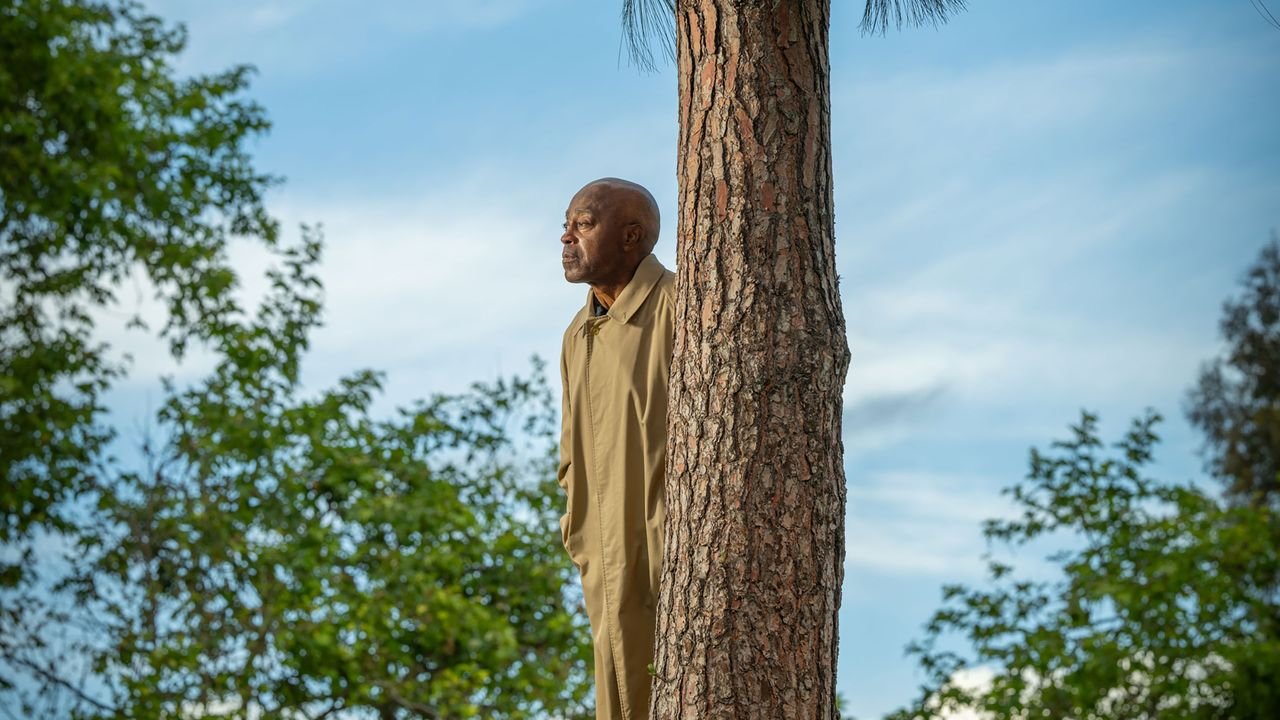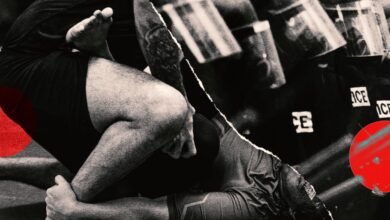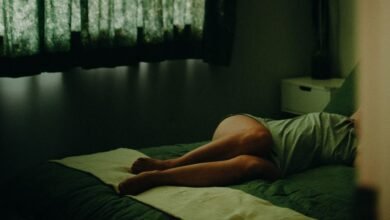
One of Burnett’s earliest cinematographic efforts is the silent short “69 Pickup,” written and directed by Penick. Two Black men pick up a white woman hitchhiking on the boulevard. They lure her back to her apartment, and rape her. The film is all skin and id, meaner than any “Shaft” film, for the obvious reason, and because it evinced a politics. The possibility or impossibility of interracial sex occupied the Black male intellectual: this was the province of Baldwin and Ellison; this was the risk of Sidney Poitier. “69 Pickup,” a minor work, to be clear, is important to see, as a kind of purging, and as an interesting and askance look at early Burnett. Here, his style, a kind of manufacturing of verité, focussed on bodies, is already apparent, a patina hovering above the horrible action, waiting to be put to better use. And Burnett would never darken his style like that again; his following work, the short “Several Friends,” which he wrote, directed, and shot, is about, as the title suggests, the digressions of adult friendship; it would lead to “Killer of Sheep.”
A precursor figure to the Rebellion movement is Oscar Micheaux, the Black writer and director who worked outside the studio system in the thirties, making race pictures—movies, in which all the actors were Black, intended to counter stereotypes. But Burnett, interestingly, had not seen any Micheaux until after “Killer of Sheep.” There is a kind of historical parallel: Black artists across film, photography, and theatre have been influenced by “Killer of Sheep” in this past half century without having exactly seen it. How many listeners of Mos Def’s “The Ecstatic” knew that the record’s cover, a still of the boy in seeming flight, comes from Burnett, as do the interludes? The work almost emanates rays; any psyche can be impacted, indirectly or directly.
The first press notes for “Killer of Sheep” memorably report the filming taking place in five or six weekends, when his actors were off work, over the course of a year. Most of the nonprofessional adult actors Burnett paid with gratitude or with beer. Some scenes, like the Chaplinesque sequence of Stan and a friend securing a car engine onto the bed of a pickup truck only for the engine to roll off as they depart, are restaged from Burnett’s life. The cut to the next scene is of young boys, whom we have seen play by the rail, leaping across buildings: not thinking about peril, they are airborne, while the adults are weighed down, chained to the road below, as noted by the filmmaker Barry Jenkins, an admirer of Burnett.
Julie Dash, the director of “Daughters of the Dust,” and an assistant director on one of Burnett’s later films, said something unforgettable about her collaborator’s best-known work: “The first time I saw ‘Killer of Sheep,’ . . . I just assumed a woman made it, because it is so tender.” Burnett sometimes begins his films with the man—his face framed tight, engulfed by fear or flame. In a medium shot comes the woman. Burnett did not name the character played by Kaycee Moore in his script for “Killer of Sheep,” but the goal was not obfuscation. Burnett’s women vibrate with inner life, a portion of which they protect from the men they love. Moore is the heart of the film. She has no relation to the Jezebel nor to the Mammy; she is a flesh-and-blood person with her own appetites and desires. Moore, the actress, does bear, I think, a coincidental resemblance to Cicely Tyson, the persevering heroine not only of the 1972 Black family film “Sounder” but of the seventies itself, with her bold and brave refusals to play stereotypes. For any actress to convey erotic life risked oversexualization, but not doing so denied a sort of humanity, a humanity that Moore, swaying with her husband to Dinah Washington’s “This Bitter Earth,” loses herself in.
The Fipresci Prize at the 1981 Berlin International Film Festival went to “Killer of Sheep.” The film brought Burnett to Europe. “When we went there,” he said, “we felt the twenties coming back,” referring to the Harlem Renaissance. The Black American artist, heralded abroad, fighting for resources on our shores, experiences a real vertigo. “In some ways,” Burnett once said, the international acclaim “made it worse. People think I’m an artist. They may not consider me for a job.”
Following the festival win, the Germans gave Burnett a financing grant for his second feature, which included equipment and a budget of around eighty thousand U.S. dollars. His next film, “My Brother’s Wedding,” which he shot in 1983, is like the photonegative of “Killer of Sheep.” The top tone is comedy, the undercurrent tragedy. “It is more didactic,” he once said. If the oral storyteller created “Killer of Sheep,” then “My Brother’s Wedding” was made by the satirist. The action, backgrounded by Johnny Ace’s lovestruck crooning, returns to South Central Los Angeles. Working in the wedding-and-a-funeral formula, Burnett spins a comic-tragic yarn about Pierce (Everett Silas), a kind of blinkered fool, who works at his parent’s dry cleaners. He’s got a chip on his shoulder, as the source of his pride comes from rejecting the striver’s gospel. He is loyal to South Central, even as he’s run down. In one comic scene, a man with a gun tries to rob him. What is a gun doing in a Burnett film? The thing is, that gun jams; Burnett, a master of irony, thwarts our expectations. There is Chekhov, yes, but in American film the gun going off is ordained by the greater cults of marketable violence. When Burnett’s gun goes off, as it eventually does—unseen and unheard, in a scene which Burnett chooses not to depict—we are suddenly aware that we have been under his quiet control. Pierce has a brother, whom he loathes. At dinner, he picks fights with him and his fiancée, a lawyer, who Pierce believes embodies the individualist greed of the saditty Black upper class. It’s only Soldier (Ronnie Bell), Pierce’s friend who has returned from war, that Pierce idolizes, seeing him as a real Black man: brawny, cool, sexed. Bell, Burnett told me, was the son of the one man to receive the death penalty under Reagan. “My Brother’s Wedding” had it all: an explicit entertainment factor, the pathos of tragedy, a behind-the-scenes political story. Would the audiences of the neon eighties see it?
But what happened was this. Post-production had been difficult. The editor had suffered a mental-health crisis. One actor walked off before filming was completed. Burnett sent an unfinished cut to his producers. It isn’t uncommon to solicit feedback during post-production. What is uncommon is for producers to send that unfinished cut to festivals. One festival premièred the unfinished version in 1984. Maslin, again reviewing, in the Times, found a new issue with Burnett, calling his directing “rudimentary” and “stiff.” Any momentum, critical for the second-time filmmaker, especially the Black filmmaker, was killed.
The ostensible reason for my visit with Burnett was the latest restoration of “Killer of Sheep.” But our conversation, in the yellow house, tended to bookend “Killer,” drifting to the preceding Watts period and the subsequent arid years—the latter more recent in memory and more representative, frankly, of the mood of his full career. Following the disastrous treatment of “My Brother’s Wedding,” the fulcrum came into view: one Burnett receiving accolades and heroic acknowledgement in the press and the other struggling to finance, complete, and release his projects. In 1988, the MacArthur Foundation awarded him a “genius” grant. “I thought it was someone playing a joke,” he told the L.A. Times afterward. Adjectives appear and reappear in the stories about Burnett and his work: unsung, underseen, unknown.
This was the Burnett that gained a kind of cult fame, the filmmaker in middle age, treading purgatory. In 1990, coinciding with the festival première of “To Sleep with Anger”—his third feature, which did well at festivals but did not receive a proper wide release—the Black film and theatre critic Lisa Kennedy profiled Burnett in the Village Voice. She saw in him a salt-of-the-earth bard who belonged not to film but to literature: “The company Burnett keeps is not with his would-be peers—[Spike] Lee or the Hudlins [Reginald and Warrington] or the Wayans [Marlon and Shawn]—but with Toni Morrison or playwright August Wilson.” Kennedy, certainly receptive to pop culture, did not intend disparagement of Black Hollywood. She was identifying the literary introversion of Burnett’s work, its focus on interiority and subdued theatricality—exactly the style that was not on trend.
What makes a Black movie a Black movie? No one can agree. In the nineties and into the new millennium, one definition prevailed: the young Black male director made movies Black, by sheer force of his authority and public presence. Although women directors, such as Julie Dash, the first Black woman to release a feature film in the U.S., put out revolutionary work, the aspect of Black filmmaking that was emphasized, among movie buffs, was that of maleness. If the rapper could trounce the rocker in popularity, then surely the Black filmmaker could become the face of the American filmmaker, which had long been considered a white man’s job. In 1991, the New York Times Magazine ran a cover story about the “black director” boom, with the headline “They’ve Gotta Have Us.” (Spike Lee, in some ways, does not count, because he endures as a phenomenon unto himself.) The Hudlins, John Singleton, and Ernest Dickerson, among others, drew big, racially mixed crowds who wanted to feel seen (or punished) by tales of wounded masculinity and police menace in the hoods. These films, many of which focussed on the new generation of South Central Black youth, flipped white male film genres: they were Westerns, noirs, crime tales. And although they embraced melodrama and spectacle, they lived and died on contemporary statistics. “Menace II Society,” from 1993, directed by the Hughes brothers, opens with archival footage of the Watts riots, setting the scene for the inescapable cycle of resistance, infighting, and death. Singleton’s “Boyz n the Hood” begins with the title card: “One out of every twenty-one Black American males will be murdered in their lifetime.”
Source link






